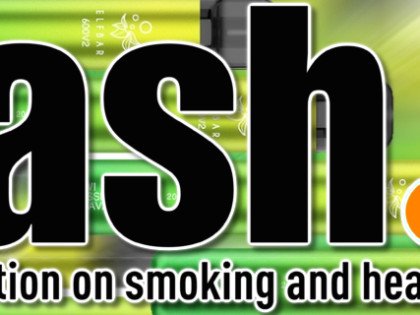Following the release of a recent ASH report, Deborah Arnott, ASH’s Chief Executive said:
“The disposable vapes that have surged in popularity over the last year are brightly coloured pocket-sized products with sweet flavours and sweet names, and are widely available for under a fiver, no wonder they’re attractive to children.”
A number of advocates pointed to statements such as this fuelling the growing concern in the public and politicians, and legitimising hysteria in media articles.
Responding to the worries about teen vaping, ASH’s briefing issues some key facts and messages.
The first, “Vaping is not risk free, and NICE recommends that vaping should be discouraged in children and young people who have never smoked”, indicates a balanced position that e-cigs can play a useful role in helping smoking teens to quit tobacco use.
Importantly, ASH then goes on to state: “The proportion of young people who vape has increased, but media reports that youth vaping risks becoming a potential ‘public health catastrophe’ leading to a ‘generation hooked on nicotine’ 3 are not substantiated by the evidence.”
- Most youth vaping is experimental
- Underage vapers mainly buy from shops
- 43% have been given them; 18% have bought them from friends or other informal sources, 11% buy from street markets; and 10% have bought on the internet
- Elf Bar and Geek Bar by far the most popular brands
- Underage vapers are much more likely to report no urges to vape
The briefing says that schools should consider a coordinated whole school approach to smoking and vaping in the curriculum, adding “most young vapers also smoke or have smoked and it is important to recognise, and communicate to children and young people, that the level of risk from smoking is far greater than vaping, so the two are not confused.”
“It is important for schools to educate children on vaping, emphasising that vapes are less harmful than smoking, but that their purpose is to help adult smokers stop smoking. Smoking and vaping should both be discouraged, but it is important to do so in ways that do not inadvertently glamourise these behaviours or increase misperceptions that vaping is equally or more harmful than smoking.”
Importantly, the briefing ends by exploding some of the myths still circulating about vaping – including one that always seems to feature in every newspaper article about disposables: “Disposable vapes DO NOT contain as much or more nicotine as a packet of 20 cigarettes. Comparing like with like, a UK standard 2 ml disposable vape contains 40 mg of nicotine, an average pack of 20 cigarettes contains 250 mg of nicotine11 which is more than six times as much.”
References:
- Action on Smoking and Health - https://ash.org.uk/
Photo Credit:
Photo by Imthaz Ahamed on Unsplash
Dave Cross
Journalist at POTVDave is a freelance writer; with articles on music, motorbikes, football, pop-science, vaping and tobacco harm reduction in Sounds, Melody Maker, UBG, AWoL, Bike, When Saturday Comes, Vape News Magazine, and syndicated across the Johnston Press group. He was published in an anthology of “Greatest Football Writing”, but still believes this was a mistake. Dave contributes sketches to comedy shows and used to co-host a radio sketch show. He’s worked with numerous start-ups to develop content for their websites.
Join the discussion
ASH UK’s Coordinated Comment
Action on Smoking and Health has coordinated a series of responses to the Governments proposals to include interested parties
Doctors call for ban
Doctors call for prescription-only vapes in a letter to The Times under the guise of protecting children – ignoring the impact a similar approach has had in Australia
A Manifesto for Smokefree Beginnings
The Smoking in Pregnancy Challenge Group has produced its fourth national report: “A Manifesto for Smokefree Beginnings”
Research Shows Fewer Quitters
A study published in BMC Medicine looks at the decline in smoking in England since the pandemic, drawing comment from experts and the Independent British Vape Trade Association






-listing400.jpg)




